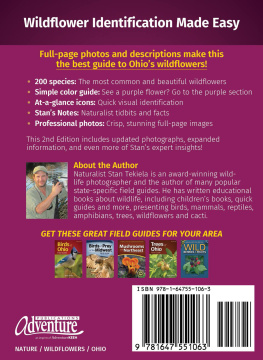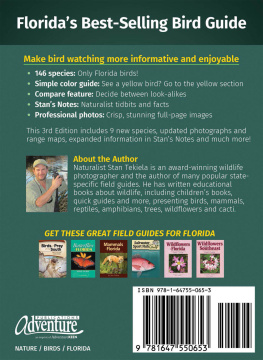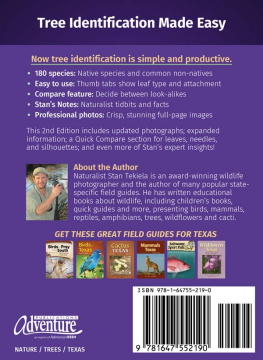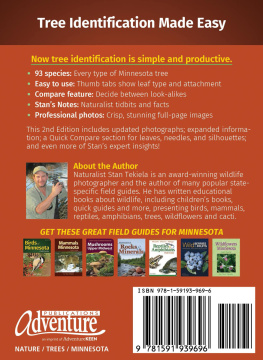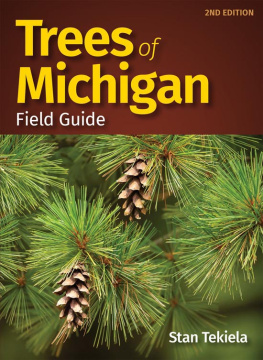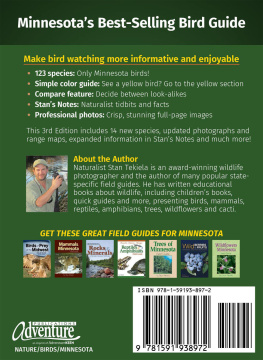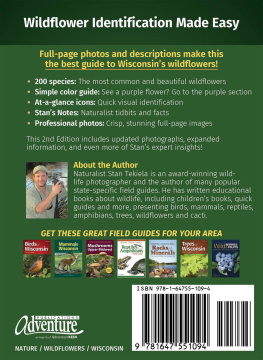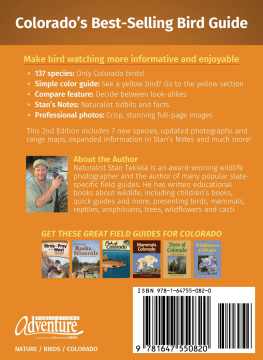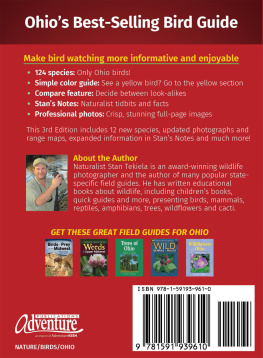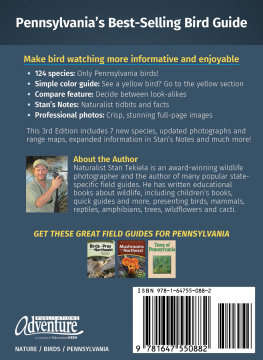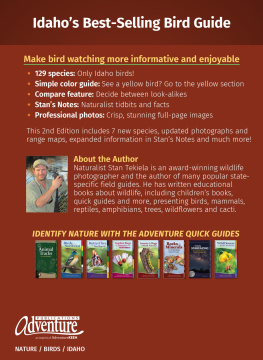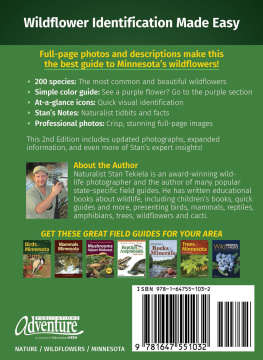

Dedication
To my daughter, Abigail Rose. The sweetest flower in my life.
Acknowledgments
I would like to thank Kathy Heidel, a wonderful naturalist with extraordinary knowledge of the wildflowers of Ohio. I will always have a special place in my heart for her. And thanks to John D. Jackson, Ph.D., a botanist who continues to guide me through the wonderful world of wildflowers. Special thanks to naturalist Elise Martin Bushard and photographer Richard Haug for their help with this book.
Edited by Sandy Livoti
Cover, book design and illustrations by Jonathan Norberg
Cover photo: Wild Geranium by Stan Tekiela
All photos copyright by Stan Tekiela unless otherwise noted.
Rick and Nora Bowers: (both)
10 9 8 7 6 5 4 3 2
Wildflowers of Ohio Field Guide
First Edition 2001, Second Edition 2021
Copyright 2001 and 2021 by Stan Tekiela
Published by Adventure Publications
An imprint of AdventureKEEN
310 Garfield Street South
Cambridge, Minnesota 55008
(800) 678-7006
www.adventurepublications.net
All rights reserved
Printed in China
ISBN 978-1-64755-106-3 (pbk.); ISBN 978-1-64755-107-0 (ebook)
TABLE OF CONTENTS
Notes
OHIO AND WILDFLOWERS
Ohio is a great place for wildflower enthusiasts! Our state is at the crossroads of three major vegetative habitats. Each of these vegetative zones contains a wide and often unique variety of wildflowers. Our upper Midwest location is unique because we have a western wildflower influence, an even stronger eastern influence and a strong northern boreal influence. All of this means Ohio is fortunate to have an extremely diverse, often unique and certainly a very healthy variety of wonderful wildflowers.
The Wildflowers of Ohio Field Guide is an easy-to-use field guide to help the curious nature seeker identify 200 of the most common wildflowers in Ohio. It features, with only a few exceptions, the herbaceous wildflowers of Ohio. Herbaceous plants have soft green stems and die back to the ground each fall. Only a few plants with woody stems have been included because these particular plants are very common and have large showy flowers.
STRATEGIES FOR IDENTIFYING WILDFLOWERS
Determining the color of the flower is the first step in a simple five-step process to identify a wildflower.
Because this guide is organized by color, identifying an unknown wildflower is as simple as matching the color of the flower to the color section of the book. The color tabs on each page identify the color section.
The second step in determining the identity of a wildflower is the size. Within each color section, the flowers are arranged by the size of the flower, or flower cluster, from small to large. A plant with a single, small, yellow flower will be in the beginning of the yellow section while a large white flower will be towards the end of the white section. Sometimes flowers are made up of many individual flowers in clusters that are perceived to be for rulers to help estimate flower and leaf size.
Once you have determined the color and approximate size, observe the appearance of the flower. Is it a single flower or cluster of flowers? If it is a cluster, is the general shape of the cluster flat, round or spike? For the single flowers, note if the flower has a regular, irregular, bell or tube shape. Also, counting the number of petals might help to identify these individual flowers. Compare your findings with the descriptions on each page. Examining the flower as described above should result in narrowing the identity of the wildflower down to just a few candidates.
The fourth step is to look at the leaves. There are several possible shapes or types of leaves. Simple leaves have only one leaf blade but can be lobed. Compound leaves have a long central leaf stalk with many smaller leaflets attached. Twice compound leaves have two or more leaf stalks and many leaflets. Sometimes it is helpful to note if the leaves have toothed or smooth margins (edges), so look for this also.
For the fifth step, check to see how the leaf is attached to the stem. Some plants may look similar but have different leaf attachments so this can be very helpful. Look to see if the leaves are attached opposite of each other along the stem, alternately, or whorled around a point on the stem. Sometimes the leaves occur at the base of the plant (basal). Some leaves do not have a leaf stalk and clasp the stem at their base (clasping) and in some cases the stem appears to pass through the base of the leaf (perfoliate).
Using these five steps (color, size, shape, leaves and leaf attachment) will help you gather the clues needed to quickly and easily identify the common wildflowers of Ohio.
USING THE ICONS
Sometimes the botanical terms for leaf type, attachment and type of flower can be confusing and difficult to remember. Because of this, we have included icons at the bottom of each page. They can be used to quickly and visually match the main features of the plant to the specimen you are viewing without even needing to completely understand the botanical terms. By using the photos, text descriptions and icons in this field guide, you should be able to quickly and easily identify most of the common wildflowers of Ohio.
The icons are arranged from left to right in the following order: flower cluster type, flower type, leaf type, leaf attachment and fruit. The first two flower icons refer to cluster type and flower type. While these are not botanically separate categories, we have made separate icons for them to simplify identification.
Flower Cluster Icons

(icon color is dependent on flower color)
Any cluster (tightly formed group) of flowers can be categorized into one of three cluster types based on its over-all shape. The flat, round and spike types refer to the cluster shape which is easy to observe. Technically there is another cluster type, composite, which appears as a single daisy-like flower but is actually a cluster of many tiny flowers. Because this is often perceived as a flower type, we have included the icon in the flower type section. See for its description.
Some examples of cluster types
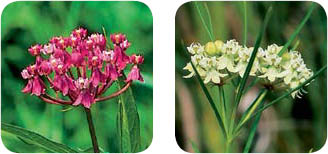
Flat
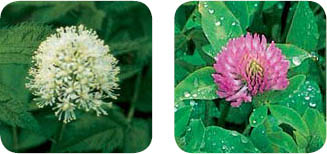
Round
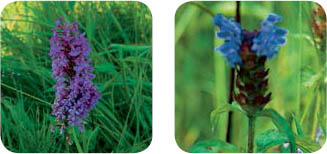
Spike
Flower Type Icons

(icon color is dependent on flower color)
Botanically speaking, there are many types of flowers but in this guide, we are simplifying them to five basic types. Regular flowers are defined as having a round shape with three or more petals, lacking a disk-like center. Irregular flowers are not round but uniquely shaped with fused petals. Bell flowers are hanging with fused petals. Tube flowers are longer and narrower than bell flowers and point up. Composite flowers (technically a flower cluster) are usually round compact clusters of tiny flowers appearing as one larger flower.
Next page
